Estimated reading time: 21 minutes
Introduction
Regular dog nail trimming is an essential aspect of canine health care, yet many dog owners overlook or view it as daunting. Maintaining your dog’s nails at an appropriate length cannot be overstated. Overgrown nails can lead to various health issues, including painful walking, posture problems, and joint damage. Moreover, the act of trimming or cutting a dog’s nails, when done correctly, can prevent accidental injuries both to the pet and the owner. While seemingly mundane, it is a practice that plays a crucial role in ensuring your furry companion’s overall well-being.
However, nail trimming is not just about preventing physical discomfort or maintaining aesthetics; it’s also about nurturing a trusting and calm relationship between you and your pet. Many dogs exhibit anxiety or fear when it comes to nail trimming, primarily due to past negative experiences or a lack of acclimatization to the process. Therefore, understanding the nuances of dog nail trimming—from identifying the right tools like nail clippers or grinders to mastering the technique of avoiding the quick (the sensitive part of the nail that contains blood vessels) and creating a stress-free environment—is pivotal. This comprehensive guide aims to equip dog owners with the knowledge and skills needed to perform this task with confidence and care. By delving into each aspect of nail trimming, from the basic anatomy of a dog’s nail to advanced techniques and handling uncooperative dogs, we will provide a thorough understanding of this essential aspect of dog grooming.
In the following sections, we will explore various facets of dog nail trimming, ensuring that novice and experienced dog owners can find valuable insights. Whether facing challenges with an uncooperative dog, looking to understand the health impacts of regular nail trimming, or seeking professional grooming advice, this guide covers it all. Our goal is to demystify the trimming of your dog’s nails and highlight its significance as a part of routine pet care, ensuring your canine companion stays happy, healthy, and comfortable.
Key Takeaways
- Understanding Canine Nail Anatomy: Grasping the structure of a dog’s nail is crucial for safe and effective trimming.
- Choosing the Right Tools: Appropriate nail trimmers or grinders are essential for a smooth trimming experience.
- Step-by-Step Trimming Guide: A systematic approach ensures a safe, stress-free nail trimming session.
- Handling Uncooperative Dogs: Employing behavioral techniques can significantly ease the process for anxious pets.
- Advanced Trimming Skills: Mastering precision techniques is beneficial for experienced dog owners.
- Health Implications: Regular nail trimming prevents various health issues, enhancing your dog’s overall well-being.
- Seeking Professional Help: Understanding when to opt for professional grooming services can be crucial for optimal nail care.
- Regular Maintenance: Consistent nail trimming is vital to comprehensive dog grooming.
Understanding the Basics of Dog Nail Trimming
The Anatomy of a Dog’s Nail and Why Trimming Is Essential
Understanding the anatomy of a dog’s nail is the first step to effective dog nail trimming. A dog’s nail is not just a hard, dead appendage; it’s a living part of their anatomy, containing nerves and blood vessels. This sensitive part, known as the quick, can lead to discomfort or even bleeding if accidentally cut. Regular nail trimming is essential not just for the sake of appearance but for the health and comfort of your dog. Overgrown nails can cause pain, affect a dog’s gait, and lead to long-term joint problems. Hence, learning how to trim dog nails properly is a crucial skill for every dog owner.
Case Study: Neglecting dog nail trimming can have serious repercussions. For instance, a study highlighted a case where a small dog suffered joint pain and walking difficulties due to prolonged neglect of nail care. The dog’s long nails curved under the paw, causing it to walk on the sides of its paws, leading to joint misalignment and chronic pain. This case underscores the importance of regular nail maintenance as part of comprehensive dog care.
Identifying the Quick in Different Nail Colors
Identifying the quick, especially in dogs with dark nails, can be challenging. The quick is easier to spot in light-colored nails, as it appears as a pinkish area within the nail. However, it’s almost invisible in black nails, requiring extra caution. The goal is to trim the nail without cutting into the quick. A good rule of thumb is to trim the nail a little at a time and to stop when you see a pale oval on the tip, indicating you’re near the quick.
List: Signs that Your Dog’s Nails Need Trimming
- Nails are clicking on the floor while walking.
- Visible curling of the nail.
- Difficulty in walking or standing.
- Your dog’s paw appears splayed or deformed.
- Nails grow so long that they touch the ground when your dog stands.
Setting the Right Frequency for Nail Trimming
Determining the right frequency for nail trims depends on several factors, including your dog’s breed, activity level, and nail growth rate. Generally, nails should be trimmed every 3-4 weeks. However, active dogs that walk frequently on hard surfaces may naturally wear down their nails and require less frequent trimming. Always monitor the length and condition of your dog’s nails to determine the appropriate trimming schedule.
Preparing Your Dog for Nail Trimming Sessions
Getting your dog accustomed to nail trimming is crucial for a stress-free experience. Start by gently handling your dog’s paws regularly to get them comfortable with the sensation. You can also introduce the nail clippers or grinder in a non-threatening way, allowing your dog to sniff and inspect the tools. For anxious dogs, consider pairing the experience with treats and positive reinforcement to build a positive association.
Understanding the basics of dog nail trimming—from the anatomy of a dog’s nail to recognizing when and how to trim—is vital for your pet’s health and comfort. Regular and careful trimming prevents discomfort, mobility, and long-term health problems. With patience, the right tools, and a gentle approach, you can ensure that nail trimming is a stress-free, routine part of your dog’s grooming.
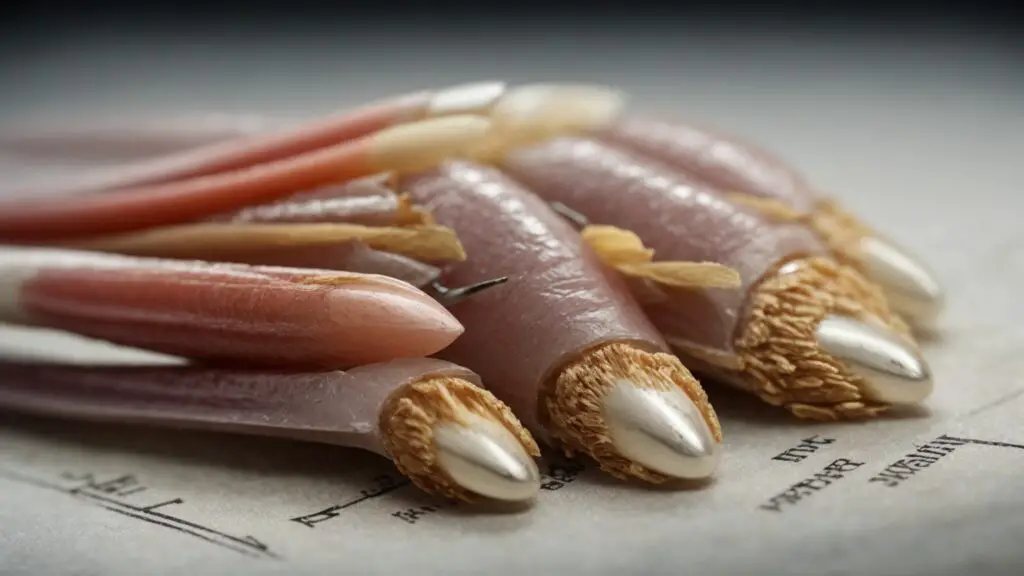
Essential Tools for Safe Dog Nail Trimming
The Variety of Tools Available for Dog Nail Trimming
The right tools are fundamental for safe and effective dog nail trimming. Various nail trimmers and grinders are available, each designed to suit different types of nails and the comfort levels of both pets and owners. The choice of tool can significantly impact the ease and outcome of the nail trimming session. It’s crucial to select tools that not only comfortably fit your dog’s nail size and shape but also tools you can handle with confidence to ensure a smooth trimming process.
List: Different Types of Nail Trimmers and Their Uses
- Scissor-type Nail Clippers: Ideal for larger dogs with thicker nails. These clippers work like scissors and are great for precise cuts.
- Guillotine-style Clippers: Best for small to medium-sized dogs. The nail is inserted into a hole, and a blade is lowered to clip the nail.
- Grinders: Suitable for dogs who are nervous about clipping. Grinders gently sand down the nail, offering a smooth finish.
- Plier-style Clippers: Versatile and commonly used, suitable for dogs of all sizes and nail types.
- Electric Nail Clippers: These are a newer innovation, offering quick and less manually strenuous trimming.
The Role of Nail Grinders in Smoother Trimming
Nail grinders play a vital role in achieving a smoother finish, which is especially important for dogs with long nails or those prone to splintering. Grinders allow for gradual shortening of the nail, reducing the risk of cutting the nail too short or causing discomfort. They are particularly useful for dogs with dark nails, where the quick is harder to see, and for dogs who might get anxious with traditional clippers.
Using Styptic Powder for Accidental Cuts
Accidents can happen, and being prepared is key. Styptic powder is essential for pet owners who trim their dogs’ nails at home. In cases where you might cut the nail too short or accidentally cut the nail too short, styptic powder helps to stop bleeding and reduce discomfort quickly. It’s a safety net that every pet owner should have on hand during nail trimming sessions.
An experienced veterinarian once said, “Choosing the right tool for your dog’s nail trimming isn’t just about the size or type of the nail; it’s also about the comfort level of both the pet and the owner. The right tool should feel like an extension of your hand, giving you control and confidence during the trimming process.”
Selecting the right dog nail-trimming tools is a crucial aspect of pet grooming. Each type of nail trimmer or grinder has its specific uses and benefits. Understanding these can significantly enhance the safety and effectiveness of your nail-trimming routine. Choosing the appropriate tool and being prepared for accidents with items like styptic powder can ensure a more comfortable and stress-free experience for you and your dog. Remember, regular nail maintenance is an important part of keeping your dog healthy and happy.
Step-by-Step Guide to Trimming Your Dog’s Nails
Breaking Down the Nail Trimming Process
Trimming your dog’s nails might seem daunting, but breaking it down into manageable steps can make the process easier and safer. Proper dog nail trimming is vital to pet care, ensuring your dog’s comfort and preventing issues related to overgrown nails. Whether using dog nail clippers or a grinder, following a step-by-step approach is crucial for a successful nail trim.
List: Steps for a Safe and Effective Nail Trim
- Gather Your Tools: Ensure you have the right nail trimmer or grinder, styptic powder for accidental cuts, and treats for positive reinforcement.
- Prepare Your Dog: Help your dog get used to having its paws handled and nails touched before starting the trimming.
- Choose a Comfortable Spot: Find a well-lit, quiet area where your dog feels comfortable.
- Inspect the Nails: Identify which nails need trimming, especially if your dog has dewclaws.
- Trim Gradually: Clip small nail sections at a time, especially if the nails are long or your dog is nervous.
- Avoid the Quick: Avoid cutting into the quick, particularly in dogs with dark nails where it’s less visible.
- Reward Your Dog: After trimming each nail, or even after little progress, reward your dog for creating a positive association with nail trimming.
Positioning Your Dog Comfortably
Ensuring your dog is comfortable and still is key for a successful nail trim. Holding small dogs in your lap may work best, while larger dogs may be more comfortable lying down or standing. Use a non-slip mat for stability and gently hold your dog’s paw. Extend the nail by pressing on the pad gently, but be mindful of your dog’s comfort level throughout the process.
Cutting at the Right Angle
When trimming, cut the nails at a 45-degree angle, following the natural curve of the nail. This helps prevent splitting the nail or cutting it too short. If unsure, it’s better to trim less and trim more frequently. The pinkish quick for dogs with white nails is visible, so aim to cut just before it. For dark nails, make several small cuts and look for a chalky white ring, which indicates you’re close to the quick.
A professional groomer advises, “When trimming your dog’s nails, it’s important to stay calm and confident. Dogs can sense your anxiety, which may make them nervous. Take your time, speak soothingly, and remember that it’s okay to trim just one or two nails at a time if that’s what your dog tolerates best.”
Dealing with Dark Nails
Trimming dogs with dark nails can be challenging because the quick is not visible. The key is to make small cuts and check the nail tip after each cut for a dark dot surrounded by white, indicating you’re getting close to the quick. Using a flashlight can help illuminate the nail structure better in these cases.
A careful and systematic approach to dog nail trimming is essential. By understanding the right technique, using the appropriate tools, and ensuring your dog’s comfort throughout the process, you can make nail trimming a stress-free experience for you and your pet. Regular nail trims keep your dog comfortable and are integral to overall pet wellness and care.
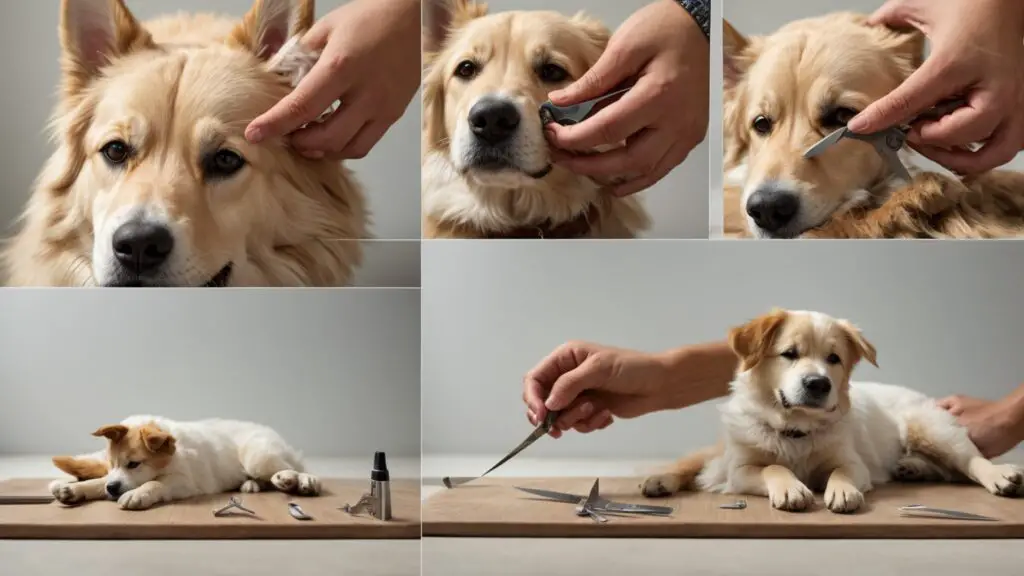
Overcoming Challenges with Uncooperative Dogs
Strategies for Handling Difficult Dogs During Nail Trims
Nail trimming can be challenging, especially when dealing with uncooperative or anxious dogs. It’s common for many pet owners to face resistance from their pets during dog nail trimming. However, with the right strategies and patience, it’s possible to turn this stressful situation into a manageable and pleasant experience for you and your dog. Understanding your dog’s behavior and gently acclimating them to the process can make a significant difference.
Behavioral Techniques for Calming Anxious Dogs
Anxious dogs often require a gentle and gradual approach to nail trimming. Start by getting your dog used to having their paws handled without the intent of nail trimming. Regular, calm paw handling can help reduce anxiety. Calming signals, such as yawning or averting your gaze, can also tell your dog that there’s nothing to fear. Incorporate positive reinforcement, like treats and praise, to build a positive association with each process step.
There are numerous success stories of owners who have successfully trained their uncooperative dogs to tolerate nail trims. For instance, one dog owner gradually accustomed their anxious dog to nail trimming by initially just touching the dog’s paws and gradually progressing to clipping just one nail at a time, always followed by a treat. Over time, the dog began associating nail trimming with positive experiences, easing the process significantly.
Creating a Positive Association with Nail Trimming
Creating a positive association with nail trimming is key to managing uncooperative dogs. Begin by associating the nail trimmers with positive things. Show your dog the nail clippers or grinder and give them a treat without doing any trimming. Gradually, as your dog becomes more comfortable, you can trim their nails, pausing and rewarding after each successful clip.
List: Tips for Gradual Desensitization
- Touch your dog’s paws regularly without clipping.
- Introduce the nail trimmer in a non-threatening manner.
- Trim just a tiny bit of the nail during initial sessions.
- Reward your dog generously after each successful nail trim.
- Keep the trimming sessions short and stress-free.
Table: Comparison of Calming Aids
| Calming Aid | Description | Best For |
|---|---|---|
| Calming Treats | Treats infused with ingredients like chamomile and L-Theanine. | Mildly anxious dogs. |
| Thundershirt | A snug garment that applies gentle pressure. | Dogs that respond well to swaddling. |
| Pheromone Diffusers | Emits calming pheromones similar to those a mother dog produces. | General anxiety relief. |
| Soothing Music | Music specifically composed to calm dogs. | Creating a relaxed environment. |
Seeking Professional Assistance for Behavioral Issues
If your dog’s anxiety or uncooperative behavior persists, seeking professional assistance from a vet or a dog behaviorist can be beneficial. They can provide tailored advice and recommend behavior modification techniques or calming supplements to make nail trimming less stressful.
A renowned dog behaviorist once said, “Helping your dog overcome fear of nail trimming is about patience and positive reinforcement. It’s important to go at the dog’s pace and never force the process, as this can lead to increased anxiety and fear.”
Overcoming the challenges of nail trimming with uncooperative dogs requires patience, understanding, and consistent effort. By employing behavioral techniques, creating positive associations, and gradually desensitizing your dog to the process, you can transform nail trimming from a dreaded chore into a bonding experience. Remember, if you encounter persistent difficulties, it’s always advisable to consult with professionals for additional guidance and support. Regular dog nail trimming is a crucial part of grooming and an opportunity to strengthen the bond with your pet.
Advanced Techniques for Experienced Pet Owners
Taking Dog Nail Trimming to the Next Level
For experienced pet owners, dog nail trimming is more than routine grooming; it’s an opportunity to ensure their pet’s optimum health and comfort. Advanced techniques in dog nail trimming can significantly improve the process, making it more efficient and less stressful for the dog and the owner. These techniques require a deeper understanding of a dog’s nail structure and a careful approach to avoid discomfort, particularly when dealing with different types of dog nails.
One experienced dog owner shared their journey of mastering the art of nail trimming. Initially challenged with the fear of cutting the nails too short and causing pain, they learned through practice and patience. By understanding their dog’s nail anatomy and getting comfortable with various trimming tools, they turned nail trimming into a quick, stress-free experience. They emphasized that the key was in trimming and understanding the nuances of each nail and their dog’s behavior.
Precision Trimming Techniques
Precision is paramount when it comes to advanced nail trimming. One technique is to trim the nail in several small clips rather than a single cut. This method allows for more control and reduces the chance of cutting quickly, especially in dogs with dark nails. Another technique is to use a file or grinder after clipping to smooth out any rough edges, which is particularly useful in preventing the dog’s nails from snagging on carpets or furniture.
Avoiding the Quick in Dark Nails
Dark nails pose a particular challenge as the quick is not visible. An advanced technique is to look at the cross-section of the nail while trimming. As you get closer to the quick, the texture and color of the center of the nail start to change – it appears more homogenous and darker. Trimming should stop when this change is observed. Regular use of a flashlight or magnifying glass can also aid in better visualizing the quick in dark nails.
Table: Guide to Advanced Trimming Tools
| Tool Type | Best For | Features |
|---|---|---|
| Scissor Clippers | Larger breeds, thick nails | Precise cuts, better control |
| Guillotine Clippers | Small to medium breeds | Easy to use, less force required |
| Electric Grinders | Dogs that fear clippers | Gradual nail shortening, smooth finish |
| Nail Files | Post-trimming | Smoothing out rough edges |
| LED Clippers | Dark nails | Illuminates the nail, better visibility of the quick |
Maintaining Nail Health Between Trimmings
Maintaining nail health between trimmings is just as important as the trimming itself. This includes regular nail inspections for signs of splitting or cracking and ensuring that the dog’s diet supports healthy nail growth. Massaging the paws and gently manipulating the nails can also help keep the nails and paw pads healthy and get your dog accustomed to paw handling.
Advancing your nail trimming skills involves better technique and a deeper understanding of your dog’s needs and comfort. It’s about combining precision with care and the right tools with the right approach. Advanced techniques in dog nail trimming are not only about avoiding pain but also about promoting the overall well-being of your pet. Regular and careful trimming, combined with a good understanding of your dog’s nail health, ensures that your dog stays comfortable, healthy, and happy.
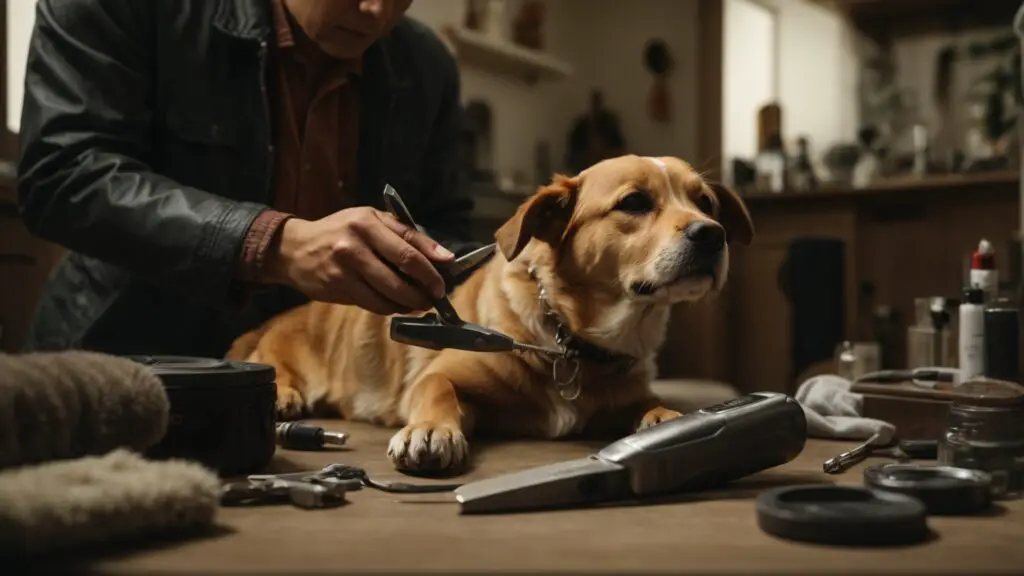
The Health Impacts of Regular Nail Trimming
Exploring How Nail Trimming Affects Overall Canine Health
Regular nail trimming is not just a cosmetic procedure for dogs; it’s vital to maintaining their overall health. Dog nail trimming is often overlooked as a critical element of pet care, but its impacts are far-reaching. Long, untrimmed nails can lead to many problems, affecting everything from a dog’s posture to its walking style. This section delves into the various health implications of regular nail maintenance, shedding light on why it’s an essential routine for every dog owner.
A renowned veterinarian once noted, “The condition of a dog’s nails can significantly influence its health. Overgrown nails can lead to pain, deformities, and even affect a dog’s spinal alignment. Regular trimming is as important as any other aspect of pet care.”
Connection Between Nail Length and Joint Health
The length of a dog’s nails is directly connected to its joint health. When nails are too long, they force the dog to walk on the sides of its paws, altering its natural gait. This unnatural posture can lead to joint stress and eventual deterioration of joint health, especially in older dogs. Regular trimming ensures that dogs can maintain their natural walking and running posture, which is crucial for their long-term joint health.
Case Study: A compelling case study highlighted the consequences of nail neglect: a dog developed severe arthritis after years of walking on overgrown nails. The constant pressure on its joints, caused by the unnatural walking posture, led to chronic pain and mobility issues. This case underscores the importance of regular nail trimming as a preventive measure against such debilitating conditions.
Preventing Injuries and Infections
Untrimmed nails are prone to splitting and breaking, which can be painful and may lead to infections. Moreover, when nails are too long, they can curl and grow into the paw pads, causing painful sores and infections. Regular trimming helps prevent these injuries, ensuring the nails are at a safe length to protect your dog from such painful outcomes.
Impact on Walking and Posture
The impact of nail length on a dog’s walking and posture is significant. Long nails can alter how a dog walks, leading to a clumsy gait that can cause muscle strain and soreness. This can be particularly detrimental to active dogs, whose agility and comfort depend heavily on the condition of their feet and nails.
Regular dog nail trimming is crucial to maintaining your dog’s health. It’s not just about preventing the nails from becoming too long or avoiding the clicking sound on the floor; it’s about ensuring your pet’s overall well-being. The benefits of regular nail care are profound, from preventing joint problems and infections to maintaining proper walking posture. As a responsible pet owner, integrating nail trimming into your dog’s grooming routine is essential for their long-term health and comfort.
Finding Professional Help: When to Seek a Groomer
Deciding When to Turn to a Professional for Nail Trimming
While many dog owners take on the task of trimming their dog’s nails themselves, there are situations where seeking professional help is the best course of action. Professional groomers have the skills, experience, and tools to handle nail trimming safely and efficiently, especially for uncooperative dogs with health issues or when the owner is unsure about doing it correctly. Understanding when to opt for professional grooming services for nail care can significantly affect your pet’s well-being.
A dog owner shared their relief and satisfaction after attending professional grooming services. Their dog, which had previously been anxious and uncooperative during nail trimming sessions at home, responded remarkably well to the groomer’s expert handling. The owner noticed that the groomer’s calm demeanor and skillful technique made the experience stress-free for the dog, highlighting the value of professional nail trimming services.
Benefits of Professional Nail Trimming
Professional nail trimming offers many benefits, making it a preferred choice for many dog owners. One significant advantage is the expertise groomers possess in handling different nail types. They are adept at trimming all kinds of nails, including those challenging dark nails where the quick is less visible, reducing the risk of pain or injury to the dog. Additionally, professionals are equipped with various tools and techniques, ensuring a smooth and pain-free experience for the dog. This expertise is particularly beneficial in preventing accidental injuries, such as cutting the nails too short, a common concern for many dog owners.
Another crucial benefit is the reduced stress for the dog and the owner. A professional groomer’s experienced handling and calming presence can significantly ease the anxiety of nervous dogs, making the nail-trimming process more comfortable and less stressful for everyone involved.
Table: Comparison of Grooming Services
| Service | Description | Ideal For |
|---|---|---|
| Basic Nail Trimming | Standard trimming using clippers or grinders | Dogs with straightforward nail-trimming needs |
| Nail Grinding | A more detailed trimming method using a grinder for a smooth finish | Dogs with thick or difficult nails |
| Complete Grooming Package | Includes nail trimming, bathing, and hair trimming | Dogs requiring comprehensive grooming care |
| Mobile Grooming | Grooming services provided at your home | Dogs that are anxious or uneasy about traveling to a grooming salon |
What to Look for in a Professional Groomer
When selecting a professional groomer, several key factors must be considered to ensure the best care for your pet. Firstly, the experience and reviews of the groomer are paramount. Opt for a groomer with a proven track record of success and positive feedback from other pet owners. This can give you a sense of their reliability and the quality of their services. Secondly, please pay attention to their approach to handling dogs. A gentle and patient groomer, particularly with anxious dogs, is ideal as they can create a more comfortable and stress-free experience for your pet. The cleanliness and safety of the grooming facility are also crucial. The space should be well-organized, clean, and designed to be safe for all pets, ensuring a hygienic environment for grooming services.
Lastly, transparent pricing and clear communication about the services provided are essential. Ensure you clearly understand what services are included in the grooming session and their associated costs, to avoid any surprises or misunderstandings later on. These considerations will help you choose a groomer who meets your dog’s grooming needs and provides a safe, comfortable, and trustworthy environment for your pet.
A seasoned dog groomer advised, “It’s not just about cutting nails; it’s about understanding the dog, its behavior, and its needs. A good groomer will always prioritize the dog’s comfort and safety while ensuring a high-quality service.”
Seeking professional help for dog nail trimming can be wise for many dog owners. It offers expertise, safety, and convenience, particularly for those who are not confident doing it themselves or have dogs with special grooming needs. Choosing the right professional is key, and prioritizing your dog’s comfort and safety is paramount. Professional grooming is not just a luxury but an essential aspect of maintaining your pet’s health and well-being.
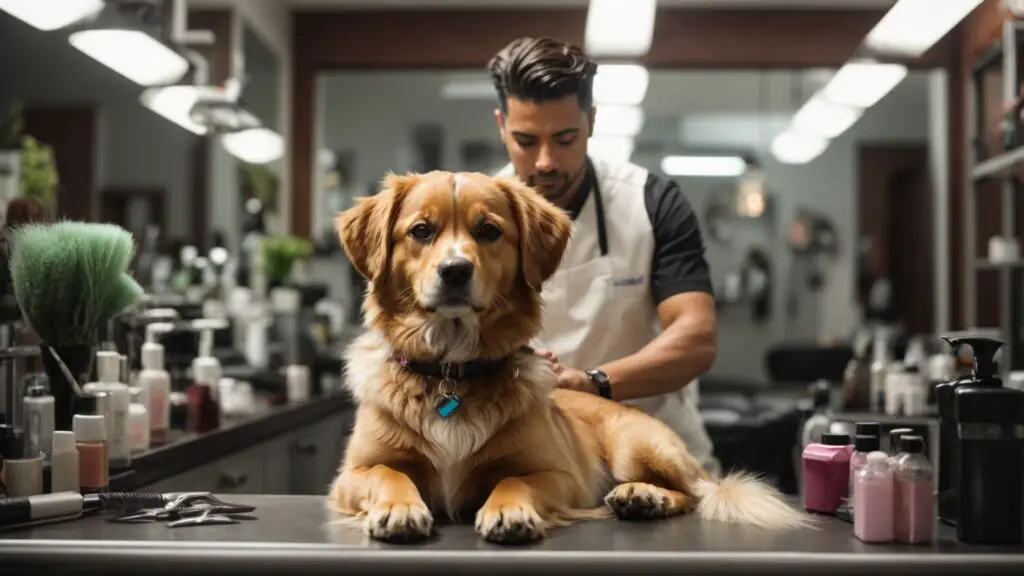
Conclusion
In this comprehensive guide, we’ve explored the crucial role of regular dog nail trimming in maintaining your pet’s health and well-being. From understanding the basic anatomy of a dog’s nail to mastering advanced trimming techniques, we’ve covered a wide spectrum of topics to equip dog owners with the knowledge and skills necessary for this important aspect of dog grooming.
Regular nail maintenance is not just about aesthetics; it’s an essential health practice. Long, untrimmed nails can lead to many issues, including joint pain, infections, and mobility problems. We’ve seen how the right trimming techniques and tools can make a significant difference and how professional grooming services can be a valuable resource for those challenging situations. The key takeaway is that regular, careful nail trimming is vital for your dog’s comfort and health. Whether you trim your dog’s nails at home or seek professional help, the goal is to ensure your beloved canine companion’s happy, healthy life.
Every dog is unique, and their nail care needs vary. It’s important to be patient, gentle, and consistent in your approach to nail care. By integrating regular nail trimming into your dog’s routine, you’re taking care of their physical needs and strengthening the bond you share with them. So, don’t forget to trim those nails and keep your furry friend prancing happily and healthily!
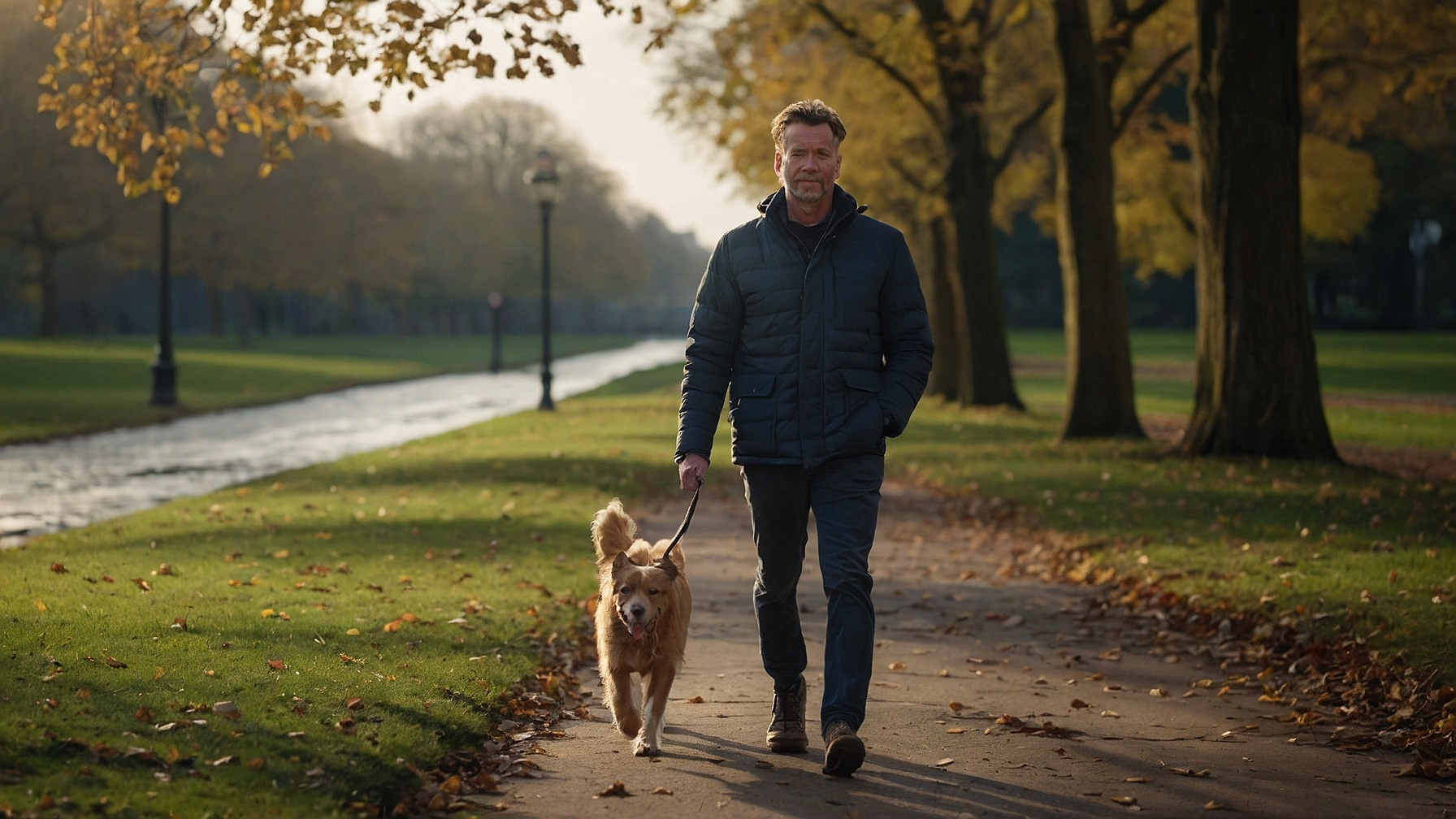
James Dunnington leads the James Dunnington Collection, featuring five unique blogs: a practical Pet Care Guide, an enlightening Ancient History Blog, a resourceful Home Improvement Guide, a cutting-edge Tech Innovation Guide, and a strategic Online Money Making platform. Each site delivers valuable insights designed to empower and inform. For updates and more tips, visit our Contact Us page to sign up for our newsletter, ensuring you never miss out on the latest content from any of these dynamic fields.